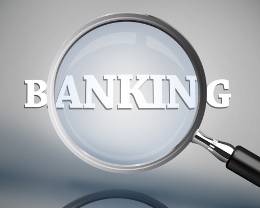What is a Commercial Paper?
Commercial Paper (CP) is an unsecured money market instrument issued in the form of a promissory note. It is not usually backed by any form of collateral, so only firms with high-quality debt ratings will easily find buyers without having to offer a substantial discount (higher cost) for the debt issue.
It was introduced in India in 1990 with a view to enable highly rated corporate borrowers to diversify their sources of short-term borrowings and provide an additional instrument to the investors. The maturity period ranges from a minimum of 7 days to a maximum of one year from the date of issue.
What are Treasury Bills?
Treasury bills (T-bills) offer short-term investment opportunities, generally up to one year. They are thus useful in managing short-term liquidity. At present, the Government of India issues three types of treasury bills through auctions, namely, 91-day, 182-day and 364-day. There are no treasury bills issued by State Governments. Treasury bills are available for a minimum amount of Rs.25,000 and in multiples of Rs. 25,000. Treasury bills are issued at a discount and are redeemed at par. Treasury bills are also issued under the Market Stabilization Scheme (MSS).
What is NEFT?
NEFT stands for National Electronic Funds Transfer. It is a nation-wide payment system facilitating one-to-one funds transfer. Under this Scheme, individuals can electronically transfer funds from any bank branch to any individual having an account with any other bank branch in the country participating in the Scheme.
There is NO MINIMUM LIMIT and NO MAXIMUM LIMIT.
What is RTGS?
RTGS stands for Real time gross settlement systems. It is a fund transfer system where transfer of money or securities takes place from one bank to another on a “real time” and on “gross” basis. Settlement in “real time” means payment transaction is not subjected to any waiting period.
MINIMUM and MAXIMUM LIMIT of RTGS is 2 lakh.
What is IFSC Code?
IFSC Code stands for Indian Financial System Code. It is an alphanumeric code that uniquely identifies a bank-branch participating in the two main Electronic Funds Settlement Systems in India: the RTGS and the NEFT Systems.
IFSC Code is an 11 digit code with the first 4 alpha characters representing the bank, The 5th character is 0 (zero), and the last 6 characters representing the particular bank branch.
What is NOSTRO and VOSTRO Account?
A NOSTRO account is maintained by an Indian Bank in the foreign countries and a VOSTRO account is maintained by a foreign bank in India with their corresponding bank.
What is a Clearing House?
A clearing house is a place for exchange of cheques by banks; it facilitates transfer of funds from one bank to another, which represents the proceeds of cheques. It is as a central meeting place for bankers to exchange the cheques drawn on one another and claim funds for the same. Such operations are called as clearing operations.
How does RBI regulate payment systems?
The Board for regulation and supervision of Payment and Settlement Systems (BPSS) is a sub-committee of the Central Board of the RBI and is the highest policy making body on payment system. The Board has been entrusted with the responsibility to authorize, prescribe policies and set standards for all existing and future payment systems in the country. The Board also has the powers to determine membership criteria to these systems and related policies.
What is Certificate of Deposit?
Certificate of Deposit (CD) is a negotiable money market instrument and issued in
dematerialised form or as a Usance Promissory Note against funds deposited at a bank or other eligible financial institution for a specified time period.
What is MICR?
MICR stands for Magnetic Ink Character Recognition. MICR Code is a 9 numeric digit code which uniquely identifies a bank branch participating in the ECS Credit scheme.
The first 3 digits in MICR code represent the city, next 3 digits represent the bank, and last 3 digits represent the branch.





